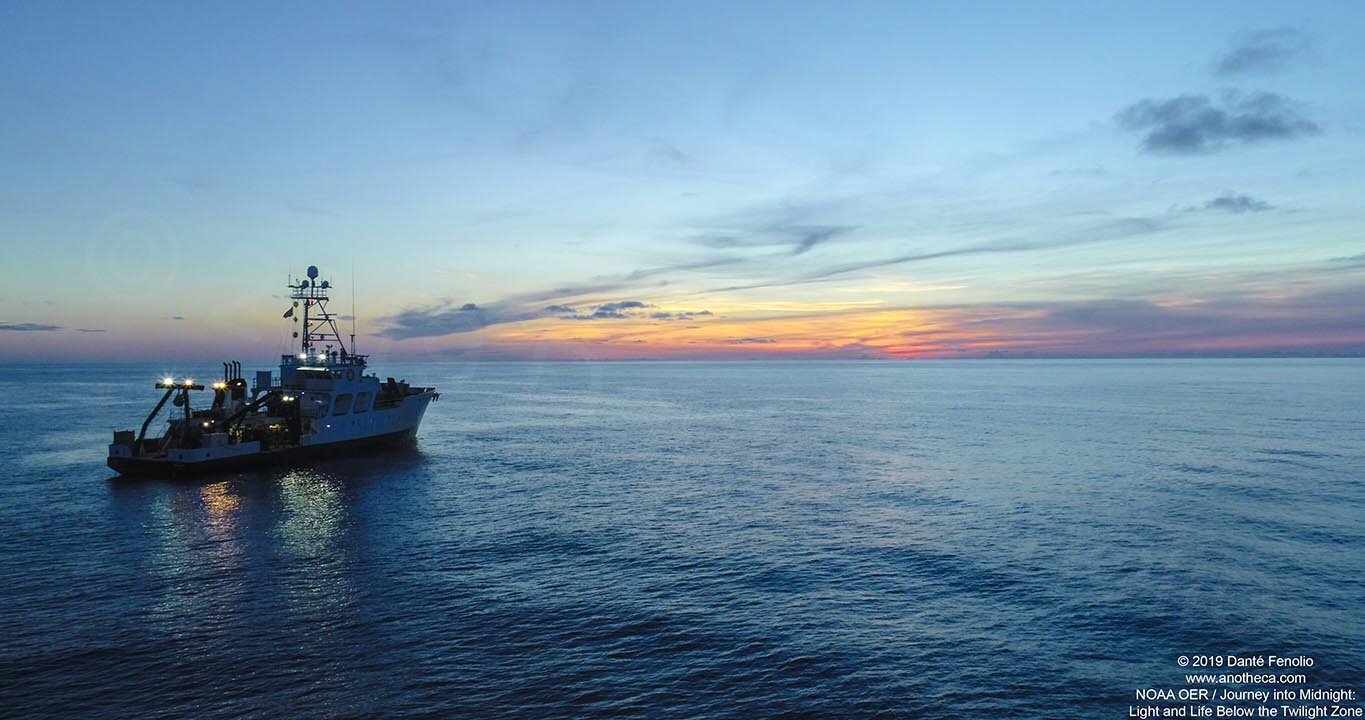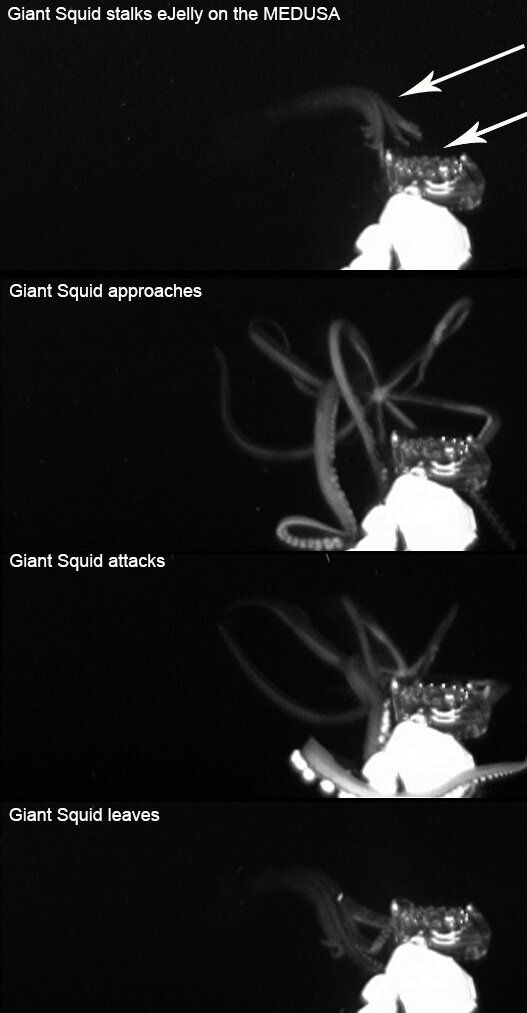On June 18, the Cape Eleuthera Institute was part of a great moment in the history of deep sea exploration!
Dr. Nathan Robinson, CEI Director, and Dr. Edie Widder, Co-Founder and CEO of the Ocean Research and Conservation Association (ORCA), captured the first-ever footage of a live giant squid in U.S. waters. This animal, which has inspired countless myths as the “Kraken of the deep,” has only been seen in the wild once before, seen in the wild once before, also by Dr. Widder, in Japanese waters.
We have known that the giant squid has existed for centuries, as once or twice a year a dead carcass of one of these animals will be caught and brought to the surface in a deep-sea fishing net or found stranded on a beach somewhere around the world.
However, seeing these animals alive in their natural habitat has proven to be one of the biggest ecological challenges of our time. This is largely because giant squid live hundreds of meters below the water’s surface in the deep ocean. Furthermore, to explore these depths, we commonly use cameras with bright lights to pierce the inky darkness of the deep. Yet herein lies the problem. Giant squid appear to be highly visual predators that likely see our lights long before we see them. Not knowing whether or not these mystery lights are a potential threat, the squid likely avoid them and remain hidden from cameras.
To address this issue, Dr. Widder developed a unique camera system that would be perfect for recording giant squid undisturbed in their natural habitat. The camera system, called the MEDUSA, is fitted with a low-light camera that is able to function in the dimmest of lights. For illuminators, the MEDUSA uses low-power LEDs that shine only in red, a color that many deep-sea organisms cannot see. Lastly, the MEDUSA is fitted with an optical lure, called an eJelly, that mimics the bioluminescent display of a deep-sea jellyfish.
Dr. Widder and Dr. Robinson deployed this device a total of six times in the Gulf of Mexico in June, recording about 144 hours of footage, before they finally caught a glimpse of the giant squid.
This footage is already helping to reveal countless mysteries about the behavior of one of the largest, yet least known, animals on this planet.

